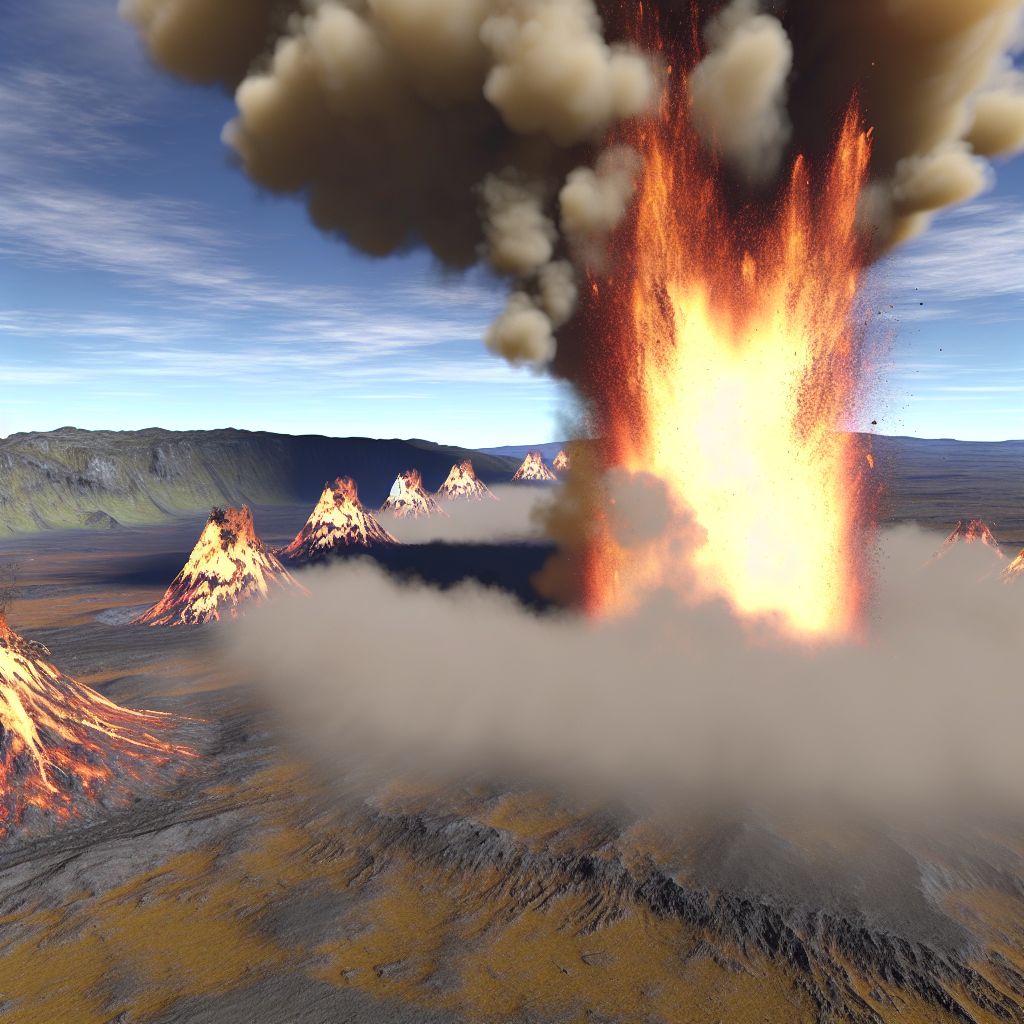Deutsch: Ausbruch / Español: Erupción / Português: Erupção / Français: Éruption / Italiano: Eruzione /
In the Space industry context, an eruption typically refers to a solar eruption, which is a sudden and intense release of Energy from the Sun's surface or its Atmosphere, known as the Corona. These eruptions can take several forms, including solar flares, coronal mass ejections (CMEs), and solar prominences. Solar eruptions are of significant interest and concern in the space industry due to their potential impact on Spacecraft operations, Satellite Communications, navigation systems, and even power grids on Earth.
Description

Solar eruptions are caused by the complex interactions of the Sun's magnetic fields. They can release vast amounts of energy, equivalent to millions of nuclear bombs exploding simultaneously, and eject billions of tons of coronal material into space at high speeds. The most powerful of these, solar flares and CMEs, can reach Earth's orbit and beyond, affecting Interplanetary space weather.
Application Areas
- Space Weather Forecasting: Monitoring and predicting solar eruptions to protect satellites, astronauts, and space missions from harmful radiation and energetic particles.
- Satellite Operations: Adjusting satellite orbits or Shielding sensitive electronics during periods of increased solar activity to mitigate the risk of damage.
- Astronaut Safety: Implementing protective measures for crewed space missions, especially during extravehicular activities, to reduce Exposure to radiation.
- Telecommunications: Managing and safeguarding communication and navigation systems, particularly those reliant on high-Frequency radio waves and GPS signals, which can be disrupted by solar eruptions.
Risks
- Radiation Damage: Solar eruptions can produce high-energy particles that can penetrate spacecraft shielding and damage electronic components.
- Communication Disruptions: Intense solar activity can cause disruptions in satellite communications, affecting everything from television broadcasts to Emergency response communications.
- Navigation Errors: Solar eruptions can disturb the Earth's Ionosphere, leading to errors in GPS and other satellite-based navigation systems.
- Power Grid Failures: Geomagnetic storms induced by solar eruptions can induce currents in power lines, potentially leading to widespread power outages.
Examples
- The Carrington Event (1859): One of the most intense geomagnetic storms on record, caused by a powerful solar eruption, which disrupted telegraph systems across Europe and North America.
- The Halloween Storms (2003): A series of solar flares and CMEs that caused satellite malfunctions, Aviation communication issues, and power grid disturbances in Sweden.
Similar Terms or Synonyms
Weblinks
- medizin-und-kosmetik.de: 'Ausbruch' im Lexikon von medizin-und-kosmetik.de (German)
Summary
Solar eruptions represent a significant natural Phenomenon with direct implications for the space industry and terrestrial technologies. Understanding, monitoring, and mitigating the effects of solar activity on space and Ground-based systems is crucial for maintaining the reliability and safety of space missions, satellite operations, and global communications Infrastructure. Advances in space weather forecasting and protective technologies continue to be essential in managing the risks associated with solar eruptions.
--
Related Articles to the term 'Eruption' | |
| 'Weather Forecasting' | ■■■■■■■■■■ |
| Weather Forecasting in the Space industry context refers to the prediction and analysis of space weather, . . . Read More | |
| 'Wind' at top500.de | ■■■■■■■ |
| Wind is the flow of gases on a large scale. On the surface of the Earth, wind consists of the bulk movement . . . Read More | |
| 'Radiation:' at environment-database.eu | ■■■■■■ |
| A Radiation: is Radiation is Energy emitted in the form of electromagnetic waves. Radiation has differing . . . Read More | |
| 'Magnetosphere' | ■■■■■■ |
| Magnetosphere: In astronomy and planetary science, a magnetosphere is a region of space surrounding an . . . Read More | |
| 'Dust' | ■■■■■■ |
| In the aerospace context, dust refers to fine particles of solid matter that are present in the atmosphere . . . Read More | |
| 'ADCS' | ■■■■■■ |
| In the Space industry context, ADCS stands for Attitude Determination and Control System. This Critical . . . Read More | |
| 'Electromagnetic interference' | ■■■■■■ |
| Electromagnetic interference: In the Space industry context, electromagnetic interference (EMI) refers . . . Read More | |
| 'Saltwater' at maritime-glossary.com | ■■■■■■ |
| Saltwater in the maritime context refers to the water from seas and oceans that has a high concentration . . . Read More | |
| 'Atmosphere' at maritime-glossary.com | ■■■■■■ |
| Atmosphere in the maritime context refers to the layer of gases surrounding the Earth, which plays a . . . Read More | |
| 'Hydrosphere' at maritime-glossary.com | ■■■■■■ |
| Hydrosphere in the maritime context refers to the collective mass of water found on, under, and over . . . Read More | |
